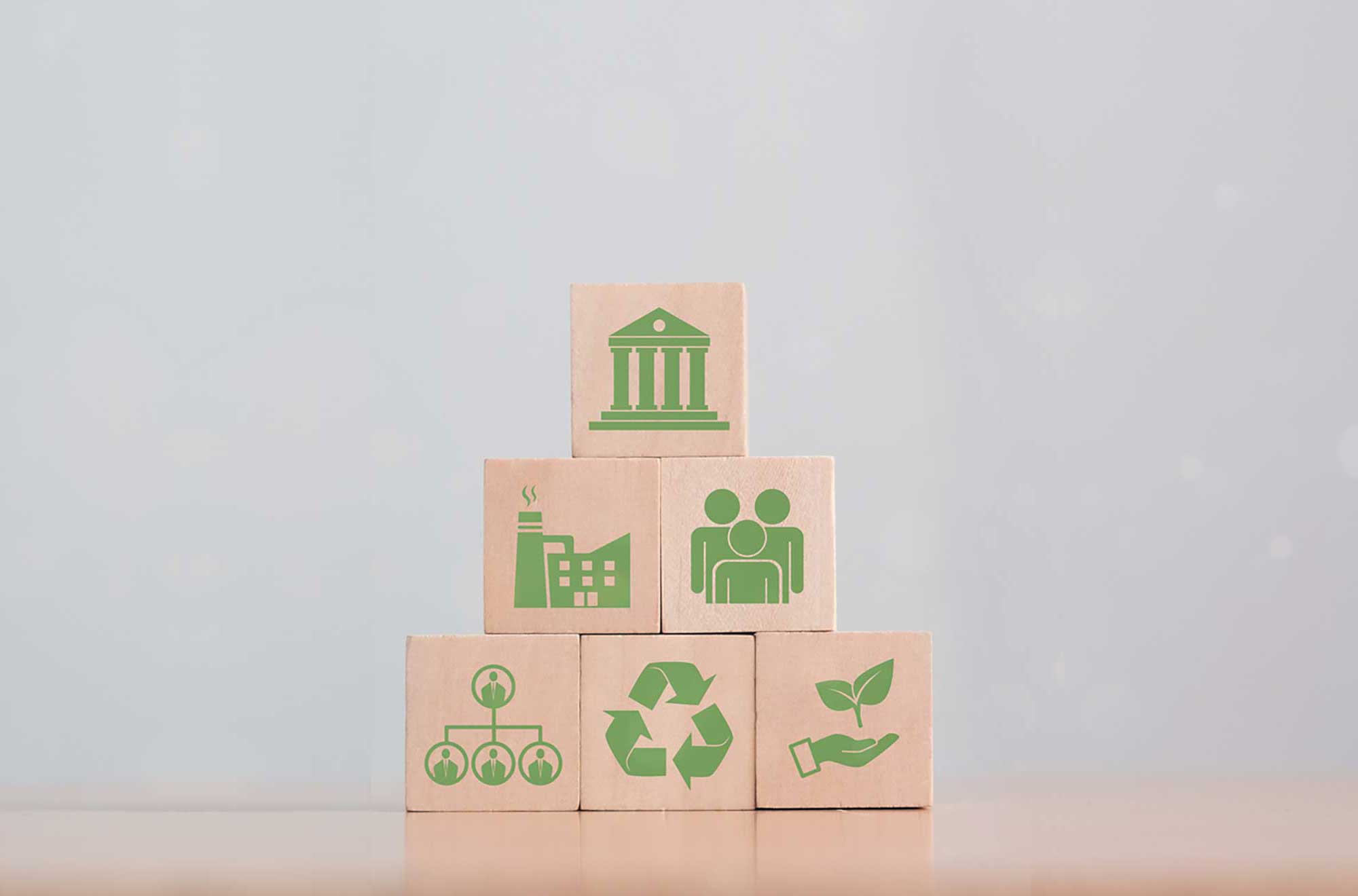Nigel H Croft*
The year 2020 will be remembered as the year that changed the world. COVID-19 has changed the way we look at our lives, the way we behave, and the way we do business. Even when the pandemic is eventually over, things will never be the same again – we will have a “new normal”. So how can a quality management system based on and certified to ISO 9001:2015 help organizations to survive, recover and eventually succeed during this crisis?
For those who are familiar with ISO 9001:2015, several key requirements will no doubt come to mind. The changes brought about by COVID-19 affect quite dramatically the context of most organizations, the needs and expectations of their relevant interested parties and the risks and opportunities the organizations face, to name but three.
But before going into details of ISO 9001, let’s begin by looking at some important extracts taken from ISO 9000:2015, which establishes the fundamental principles of quality on which ISO 9001 is based:
“An organization focused on quality promotes a culture that results in the behaviour, attitudes, activities and processes that deliver value through fulfilling the needs and expectations of customers and other relevant interested parties”.
“The quality of an organization’s products and services is determined by the ability to satisfy customers and the intended and unintended impact on relevant interested parties”.
“The quality of products and services includes not only their intended function and performance, but also their perceived value and benefit to the customer.”
So, for example, organizations that provide excellent IT support services to people’s home computers, but whose technicians do not use face masks or respect social distancing rules during the COVID-19 crisis are no longer delivering a “quality service”. On the other hand, some supermarkets have excelled by providing free home delivery services to vulnerable people who are not able to leave their homes, thereby taking an opportunity to gain future loyal customers. These are just two very simple examples where the changing business context has changed customer needs and expectations. There are also situations where the needs and expectations of interested parties other than customers have to be taken into consideration. This includes, for example, the needs and expectation of society that might lead to shops rationing customer purchases to a “maximum of three” items that are in high demand (such as toilet paper, hand sanitizers and so on), so that stocks will be still available for everyone who needs them.
The important thing an organization needs to do in these very turbulent times is to recognize the need for change, and to implement changes in a timely manner. The quality management system can help an organization to do this in a way that is both systematic and agile. Figure 1 is an old slide that I have used many times in my presentations and seminars, that I believe is extremely relevant here.

Figure 1 – Process-driven quality management system
A quality management system that is based on ISO 9001 should be process-driven, not document-driven, and should not inhibit change. Unfortunately, for some people, the first thing that comes to mind when management system standards are mentioned is the outdated (and near-sighted) philosophy of “write down what you do, then do what you wrote” that was associated with the first versions of ISO 9001 over 30 years ago. This created a mentality that innovation and organizational agility were incompatible with “ISO 9000” and quite often changes were not implemented by using the excuse “our ISO system will not allow us to do that!” Nothing could be farther from the truth - if a management system is properly implemented and is truly being put to good use by the organization, it should be results-focused and facilitate innovation and change in a structured, disciplined and agile manner. As Charles Darwin famously said “It is not the strongest of the species that survive; nor the most intelligent – it is those that are most adaptable to change”.
This is also reflected in the ISO 9004:2018 Guidance Standard that focuses on the “sustained success” of an organization: “Factors affecting an organization’s success continually emerge, evolve, increase or diminish over the years, and adapting to these changes is important for sustained success. Examples include social responsibility, environmental and cultural factors, in addition to those that might have been previously considered, such as efficiency, quality and agility; taken together, these factors are part of the organization’s context.”
So how can ISO 9001 help organizations through the COVID-19 crisis? Here are just a few ways, with reference to some specific ISO 9001:2018 requirements…….
• Clause 4.1 (“Understanding the organization and its context”) requires an organization to determine the external and internal issues that can affect its ability to provide quality products and services, and to monitor these issues on a regular basis. This can then provide important information to the management review process (Clause 9.3). In these difficult times, extra (unscheduled) management reviews can provide an excellent opportunity to react quickly to the changing circumstances brought about by the pandemic, and to plan and deploy rapid responses as appropriate. Any changes needed (to the design of products and services (Clause 8.3.6), the way in which services are provided (Clause 8.5.6), the necessary process environment (Clause 7.1.4) and others) can then be communicated (Clause 7.4) and implemented throughout the organization in an agile and organized way (Clause 6.3).
• Clause 4.2 (“Understanding the needs and expectations of interested parties”) requires the organization to determine who are the interested parties that are relevant for the quality management system, what are their relevant needs and expectations, and to monitor any changes. As with the requirements of Clause 4.1, a good way to monitor the very rapid changes brought about by COVID-19 is to use the management review process, and in particular to programme very frequent management reviews in these turbulent times. Whilst the primary interested party for quality management is the (direct and indirect) customer of the organization, the needs and expectation of other interested parties (previously not considered important) are likely to come into play. For example, the needs and expectation of society (for the organization not to unnecessarily stockpile vital supplies or to act in a way that could put others citizens at risk); the needs and expectations of employees and workers (by allowing greater flexibility for home-working; leave of absence to care for vulnerable relatives), and so on.
• Clause 6.1 (“Planning to address risks and opportunities”) is probably one of the most important clauses of ISO 9001 in terms of an organization’s response to COVID-19, and the way in which the organization addresses these requirements will be key to its survival and future success. In these uncertain times, it is appropriate for us to remind ourselves of the definition of risk – “the effect of uncertainty (on objectives”. Any decisions that the organization takes will need to be made in an extremely agile manner, and with a clear recognition that the factual basis on which they are taken is subject to considerable uncertainty and may change very rapidly. This means that decisions might need to be revisited and revised regularly as more information becomes available. Most people will recognize this concept as part of the “Plan-Do-Check-Act” cycle that is so important at all levels in the ISO 9001 standard. They may not be so familiar, though, with PDCA cycle’s lesser-known “cousin”, the “OODA” loop, developed by the American Air Force pilot John Boyd for agile decision-making in fast-changing scenarios. The OODA loop (“Observe, Orient, Decide, Act”) is a four-step approach to decision-making that focuses on filtering available information, putting it in context and quickly making the most appropriate decision, whilst at the same time understanding that changes can be made as more data becomes available. Although the OODA loop is not specifically mentioned in ISO 9001, its application can greatly assist organizations in these rapidly-changing COVID-19 related situations, and is totally consistent with the Quality Management Principle of “Evidence-based decision making”, which mentions that “Decision-making can be a complex process and it always involves some uncertainty. It often involves multiple types and sources of inputs, as well as their interpretation, which can be subjective.” (ISO 9000:2015, Clause 2.3.6)
……… but a well-implemented Quality Management System is not only about avoiding problems or minimising things that might go wrong! Clause 6.1 also emphasizes the need to recognize and act on opportunities as and when these arise. The commonly used dictionary definition of an “Opportunity” is a “set of circumstances or a moment in time that makes it possible to do something”. So the more forward-thinking organizations will actively seek out new opportunities during the COVID-19 crisis, by identifying potential new products and services they can provide, making modifications to existing products and services (including the ways in which these are provided), or entering new markets where competitors might be having difficulties in meeting market demand. We have seen examples of engineering companies adapting their production lines to manufacture much-needed hospital equipment such as artificial ventilators or EPIs; grocery stores making free home deliveries, and construction companies being hired to build new hospitals in a matter of days or weeks. Of course, any such opportunities come with associated risks that need to be taken into consideration, and with specific requirements from the customers and regulatory bodies that have to be addressed within the quality management system (Clause 8.2.2) to ensure customer satisfaction (Clause 9.1.2) and, primarily, customer safety.
• Clause 9.3 (“Management review”) - as mentioned earlier, organizations can benefit from adopting a much shorter cycle time for management review than would normally be the case. Those who have taken a reactive approach to this requirement of ISO 9001 (“we have to do this once a year to show to our auditor”) will have very little benefit, but those who have truly embraced the management review process as an important part of their business (see clause 5.1.1 c) will be able to use it in a quick and agile way to respond to the current COVID-19 crisis. This is no different from what many organizations and indeed governments are doing around the world, by having daily “crisis management (review) meetings” to assess the ongoing pandemic and the effectiveness of their reaction to it.
• Clause 10 (“Improvement”) The final clause of ISO 9001 warrants special mention because it includes several concepts within its requirements that can help organizations to deal with the COVID-19 crisis. Clause 10.1 recognizes the need to “improve products and services to meet requirements as well as to address future needs and expectations”. As mentioned earlier, customer needs and expectations have changed significantly during the pandemic, and some of these changes will most likely become permanent as the world adjusts to the “new normal”. The NOTE to Clause 10.1 recognizes that small-step continual improvements (whilst they are to be encouraged) are not always enough – sometimes breakthrough change, innovation or re-organization is required.
Clause 10.2 (“Nonconformity and corrective action”) can also be used to help organizations through the COVID-19 crisis. In particular, the requirement to “evaluate the need for action to eliminate the cause(s) of the nonconformity, in order that it does not recur or occur elsewhere” and to “determine if similar nonconformities exist, or could potentially occur” can be enhanced by looking outside the organization. This could include, for example, learning from other organizations (and countries!) by looking at the successes and failures in the ways they have dealt with problems associated with the COVID-19 pandemic, and taking appropriate actions within the organization to prevent similar problems from occurring.
So, to summarize, these are only a few selected examples of how a well-implemented quality management system can be an invaluable tool to help organizations through the COVID-19 crisis. It requires organizations to embrace the requirements of ISO 9001 in a constructive and proactive manner, rather than simply “meeting” the requirements in order to achieve certification.
* Dr Nigel H Croft was Chair of ISO/TC176/SC2 from 2010 - 2018, with overall responsibility for the ISO 9001:2015 and ISO 9004:2018 standards. He is currently convener of the ISO Task Force for the revision of “Annex SL” (the basis for all ISO management system standards). Dr Croft is a member of APCER Group’s Advisory Board, and a member of the Brazilian Academy for Quality.














